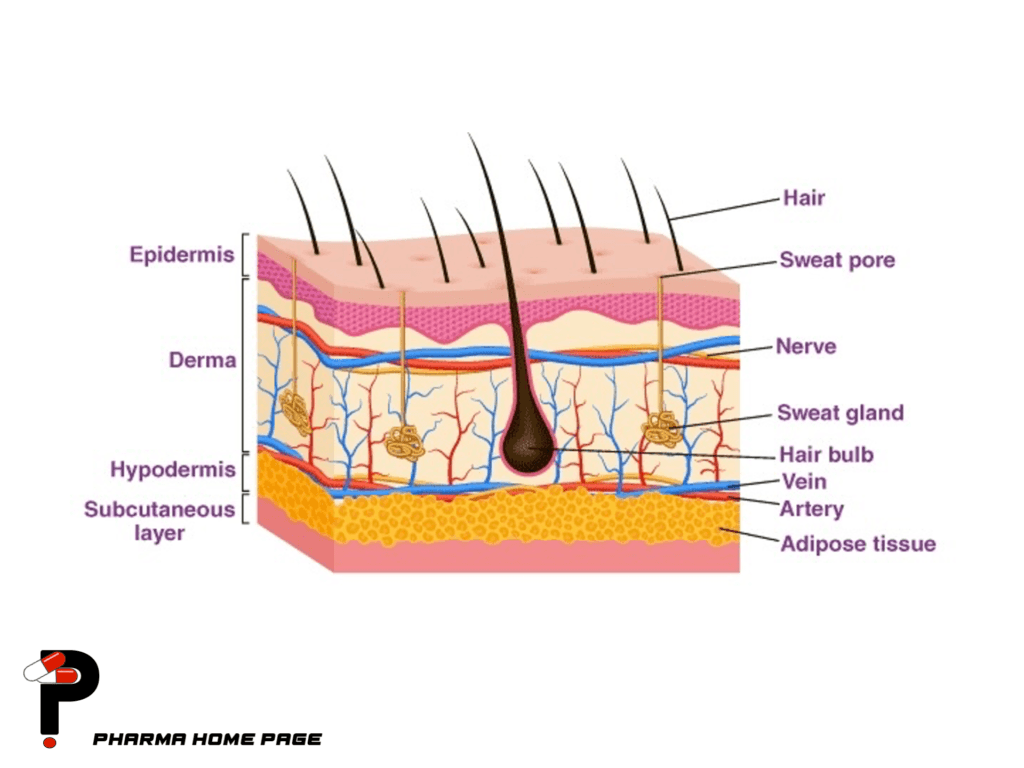The skin is the largest organ of the human body and has several important functions. It is composed of three layers: the epidermis, dermis, and subcutaneous tissue.
- Epidermis: The epidermis is the outermost layer of the skin and is composed of several layers of cells. The outermost layer is made up of dead, keratinized cells that protect the body from external damage, such as UV radiation and pathogens. The inner layers of the epidermis contain living cells that produce new skin cells and melanin, a pigment that helps protect the skin from UV radiation.
- Dermis: The dermis is the middle layer of the skin and is composed of connective tissue, blood vessels, nerves, and glands. It provides structural support to the skin and contains sensory receptors for touch, pressure, and temperature. The dermis also contains sweat glands, which produce sweat to help regulate body temperature, and sebaceous glands, which produce sebum, an oily substance that lubricates and protects the skin.
- Subcutaneous tissue: The subcutaneous tissue is the deepest layer of the skin and is composed of adipose tissue and connective tissue. It provides insulation and cushioning for the body.

Functions of the skin:
- Protection: The skin acts as a physical barrier that protects the body from external damage, such as UV radiation, pathogens, and chemicals.
- Sensation: The skin contains sensory receptors that respond to touch, pressure, temperature, and pain.
- Thermoregulation: The skin helps regulate body temperature by producing sweat, which cools the body, and by controlling blood flow to the skin.
- Vitamin D synthesis: The skin synthesizes vitamin D when exposed to UV radiation, which is important for calcium absorption and bone health.
- Immune defense: The skin contains immune cells, such as macrophages and dendritic cells, which help protect the body from infections.
- Excretion: The skin excretes waste products, such as sweat and sebum, which help remove toxins from the body.
In summary, the skin is a complex organ that has several important functions, including protection, sensation, thermoregulation, vitamin D synthesis, immune defense, and excretion. Its three layers, the epidermis, dermis, and subcutaneous tissue, work together to provide these functions and maintain the health of the body.
